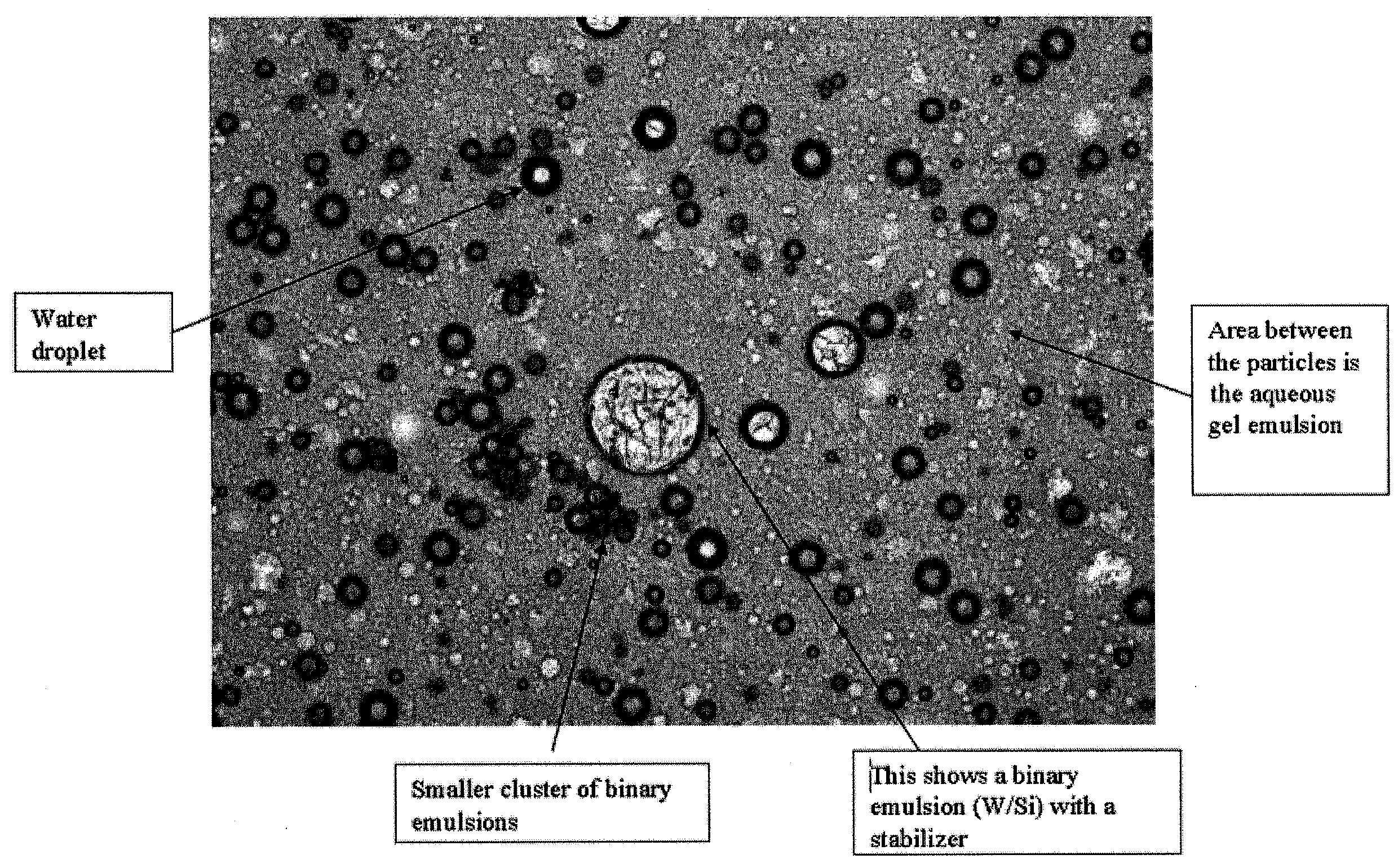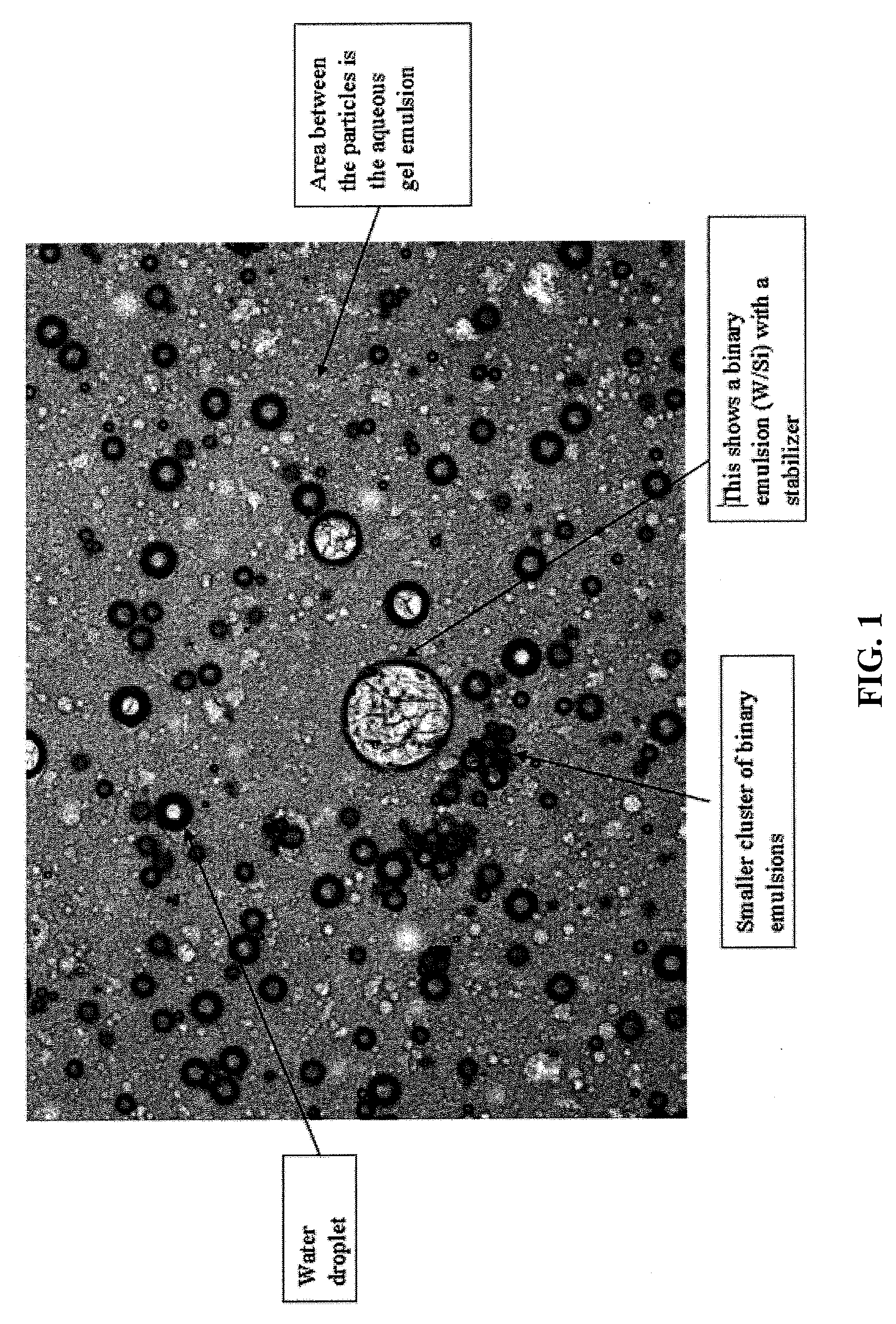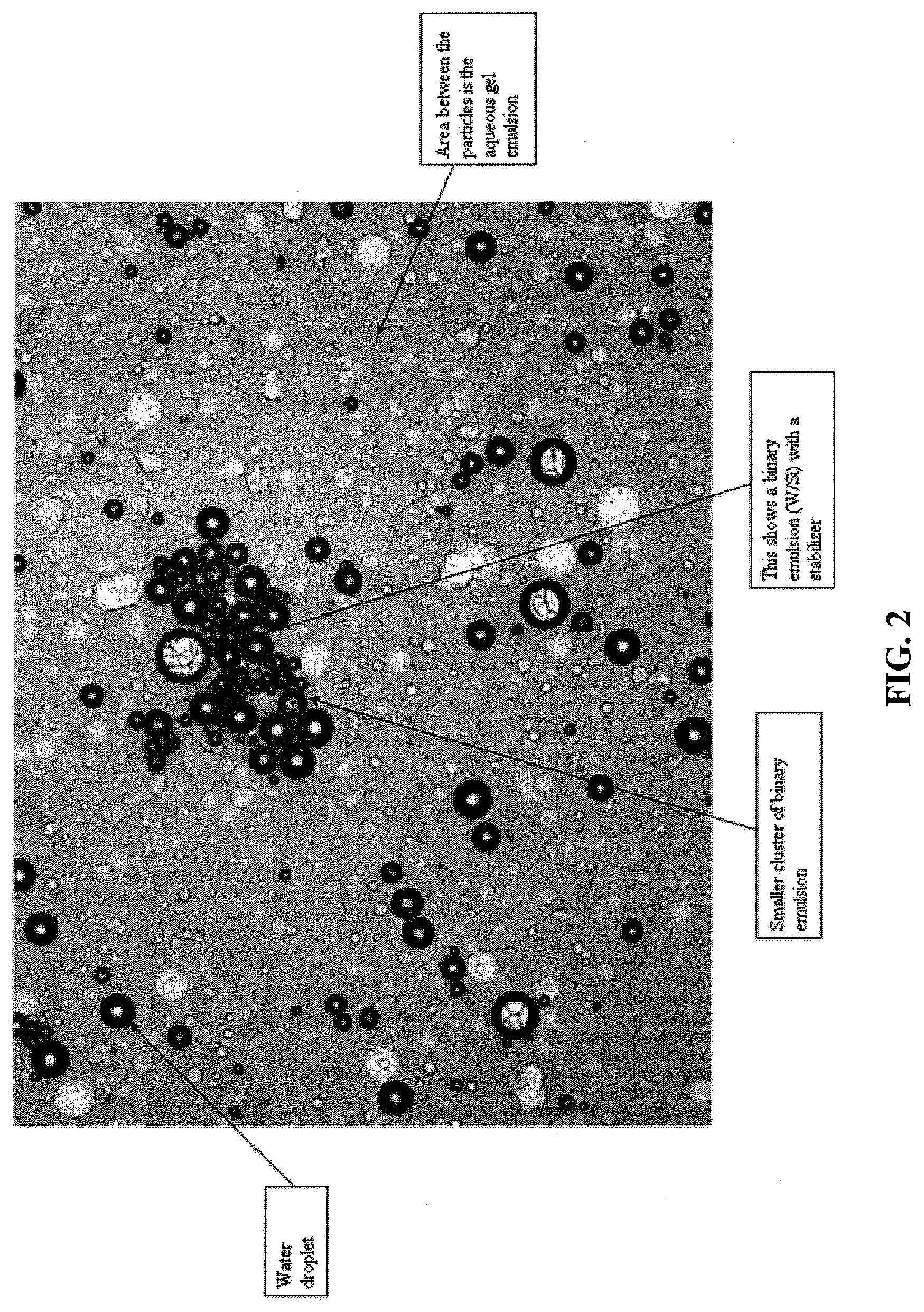Stable three-phased emulsions
a three-phase emulsion and stable technology, applied in the field of stable three-phase emulsions, can solve the problems of unstable two-phase oil-in-water emulsion, general unusability of products, and increased costs in preparing three-phase emulsions, so as to increase the stability, increase the capacity to hold water, and facilitate skin spreading or rub
- Summary
- Abstract
- Description
- Claims
- Application Information
AI Technical Summary
Benefits of technology
Problems solved by technology
Method used
Image
Examples
example 1
Water-In-Oil Inner Phase
[0090]A non-limiting example of a water-in-silicone emulsion that can be used as the water-in-oil inner phase of the three phase emulsion is illustrated in Table 1.
TABLE 1Phase*Ingredient%GramsACyclomethicone4.5180Dimethicone 1.5 cst5.5220Diethylhexyl Carbonate0.312Ethyltrisiloxane1.040Silica ethylene methacrylate2.080Copolymer, ITTCyclomethicone and Caprylyl10.00400Dimethicone ethoxy GlucosideCyclomethicone and Dimethiconol1.040Neopentyl Glycol Heptanoate1.040Octyldodecanol and Octyldodecyl2.080XylosideTalc12.5500BCyclomethicone and3.0120Dimethicone / VinyltrimethoxysilicateJojoba Esters0.520CCyclomethicone and PEG 102.080Dimethicone and DistearimoniumHectoriteSilicone Acrylate2.080DWater (Deionized)47.201888Niacinamide1.0040EGlycerin2.5100Pentylene Glycol1.040FPreservative1.040TOTAL100.00004000.0000*Phases A-C include the silicone oil phase of the water-in-silicone emulsion. Phases D-F include the dispersed water phase.
[0091]The water-in-silicone emulsion in...
example 2
Aqueous-Gel Outer Phase
[0093]A non-limiting example of an aqueous-gel outer phase that can be used as the aqueous-gel outer phase of the three phase emulsion is illustrated in Table 2.
TABLE 2%ConcentrationPhase*Ingredient(by weight)ADeionized Water91.0Ascorbyl Glucoside3.0Polyacrylate 13, Polyisobutene, Polysorbate 203.2Hydroxyethyl acetate / Sodium Acryldimethyl1.8taurate copolymer, Squalane, Polysorbate 60,Sorbitan IsostearatePreservative1.0TOTAL100*Phase A is the aqueous-gel outer phase.
[0094]Added each ingredient to a vessel under high shear mixing by using a rotation speed of 1000-3000 rpm with a Greerco Lab scale homogenizer based on 1 kg of bulk per minute creating a high turnover of batch volume. The batch thickened as each of the emulsifiers were added. Homogenized the batch an additional 2-4 minutes to yield a uniform cream gel like appearance. The aqueous-gel outer phase had a viscosity of approximately 100,000 to 140,000 cps on a Brookfield Viscometer Model RVT with Gyrosc...
example 3
Method of Preparing the Three-Phase Emulsion and Stability Data
[0095]Non-limiting examples of how two three-phased emulsions (see FIGS. 1 and 2) of the present invention were prepared by using the water-in-silicone emulsion of Table 1 and the aqueous-gel outer phase of Table 2 is provided below.
[0096]In a suitable vessel measure the appropriate ratios of primary and secondary phases such that they add to 100. In the present case, two separate three-phase emulsions were prepared with different ratios (see FIGS. 1 and 2). Using either propeller or high shear mixing, add the phases together without heat (i.e., this reaction is exothermic). Mix until the mixture takes on a uniform appearance without agglomeration or streaks of primary phase with in the secondary phase. Once complete, transfer to a holding vessel.
[0097]FIG. 1 is a micrograph of a stable three-phase emulsion which includes 92.5% by weight of the water-in-silicone emulsion of Table 1 based on the total weight of the emulsi...
PUM
| Property | Measurement | Unit |
|---|---|---|
| Temperature | aaaaa | aaaaa |
| Temperature | aaaaa | aaaaa |
| Fraction | aaaaa | aaaaa |
Abstract
Description
Claims
Application Information
 Login to View More
Login to View More - R&D
- Intellectual Property
- Life Sciences
- Materials
- Tech Scout
- Unparalleled Data Quality
- Higher Quality Content
- 60% Fewer Hallucinations
Browse by: Latest US Patents, China's latest patents, Technical Efficacy Thesaurus, Application Domain, Technology Topic, Popular Technical Reports.
© 2025 PatSnap. All rights reserved.Legal|Privacy policy|Modern Slavery Act Transparency Statement|Sitemap|About US| Contact US: help@patsnap.com



